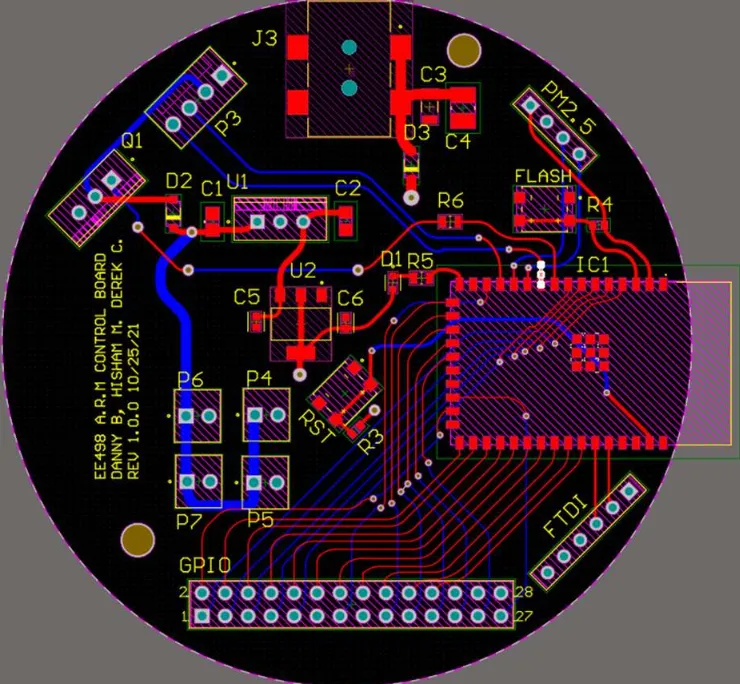Sputtertalk
Join us as we explore the frontlines of innovation in experimental & applied engineering research. In each episode, we share insights from industry and academic professionals with experience working on real, impactful, projects. Listen to Sputtertalk for grounded conversations about building systems that matter.

Latest Podcast Episodes

What Makes a Great Senior Design Project?
What Makes a Great Senior Design Project?
Almost four years ago, I was sitting in a classroom with about forty students from adjacent cohorts in the various departments of UNLV's College of Engineering. I didn't recognize most of the students, many of my friends graduated a year earlier whereas I had to retake many classes after an awful series of events and failures during the peak COVID-19 years. Students filtered themselves out into groups of three to four based on mutual interest, friendship, etc. Eventually, I found a few acquaintances I recognized from a power systems class a year earlier, and they seemed to share my interests in renewable systems.
We started by discussing our knowledge and experience, technical inclinations and the like. That helped us narrow down the types of engineering problems we'd be interested in solving. The next step was finding an actual - specific - problem to address. Our respective backgrounds were mostly in electronics, so we had quite a hard time spitballing ideas to solve the problems faced in the fields of large scale energy distribution and power generation that we were encountering in our research. Of course, in hindsight, many plausible and innovative project ideas could've arisen from these fields that utilized smaller embedded electronic systems, as I would later discover at our presentation fair the next year. We began thinking more small-scale - power-generating blankets or footwear, fitness equipment or emergency kits to deploy in homes during blackouts. Many proposals were declined by our advisor for being either too simple to design, or far too complicated. Eventually, we settled on the idea of a mesh of piezoelectric actuators that could turn ordinary household furniture and clothing items into systems that generate microwatts of power. We were unsure of the final application/use cases, but it was equal parts feasible and difficult to design and study. So we began our endeavors - first with a feasibility study & report on the capability of these piezoelectric actuators to generate any meaningful power in our imagined examples.
We worked on that project for about two months. Many failed experiments, inconclusive simulations, and reports later, we found ourselves with a conundrum. Things weren't appearing as feasible as we expected, some challenges seemed quite insurmountable, and we had to decide if we could develop something meaningful from this initial topic or find another challenge that we could more reliably complete in time for our presentation deadlines. Though our next project ended up successful and to the satisfaction of our advisor, I'd find myself regretting the decision to shift projects.
We were fortuitously approached around this time by an organization seeking senior design teams to address the challenge of improving indoor air quality during adverse weather and/or disasters. We accepted the challenge, and quickly got to work on designing a shoulder-mounted air purifier that, ideally, quickly purifiers the air your breathe directly. Of course, we ran into the same series of troubling design failures, power management challenges, and damning simulation results. We shifted to a small, table-top sized IoT (Internet-of-Things) air purifier that could adaptively react to both its own air quality measurements and online reports to remove wildfire- and combustion-emitted contaminants from the air in small spaces (up to 1000 square feet, if I remember correctly). It sounds nice, even writing about it now I feel a sense of pride for us having completed the design and overcoming some of the challenges we faced. It was an overall successful project that we received full marks for - but it did not make a great senior design project.
See, at the end of our design year, our university, like most, held a competition for the most compelling and innovative projects to receive awards for design ingenuity, marketability, interdisciplinary design, etc. We didn't win a single one. Expecting a win was part hubris, and part total misunderstanding of what made a great senior design project, instead of simply a good one. Every single team addressed a modern engineering challenge, created a compelling and interesting solution, and successfully implemented it. However, the day of our presentation and awards ceremony, I learned that the great projects presented more than functional and successful designs. They innovated.
It's one thing to simply subsist within the collective conscious, to create solutions within the realm of what is known to be possible. It's another to break beyond what is known, to show the world what exists beyond the common thought, and present incredibly creative solutions that solve problems in ways not thought possible prior. Our project was good, but it did no such things. Some days I still wonder, had we decided to stick it through the seemingly insurmountable challenges of our first project, if we would've broken past that boundary and innovated.
My advice to any students starting or about to start their senior designs is this - don't be afraid to take on the challenges! This is your time to show your ingenuity, your ingenious, your creativity, and your ability to work well with others. Take the risks, don't be deterred, and go innovate.
If any of you would like to see my final senior design report, including the all of the relevant designs, resources used, and the total cost, please reach out to me and I'd be happy to share, along with any advice or resources you could use on your journey.
Good luck, have fun, and happy engineering.
Subscribe to the Podcast
COMPANY
EXPLORE
CUSTOMER CARE
LEGAL
© Copyright 2025. Danny Benjelloun. All Rights Reserved.
